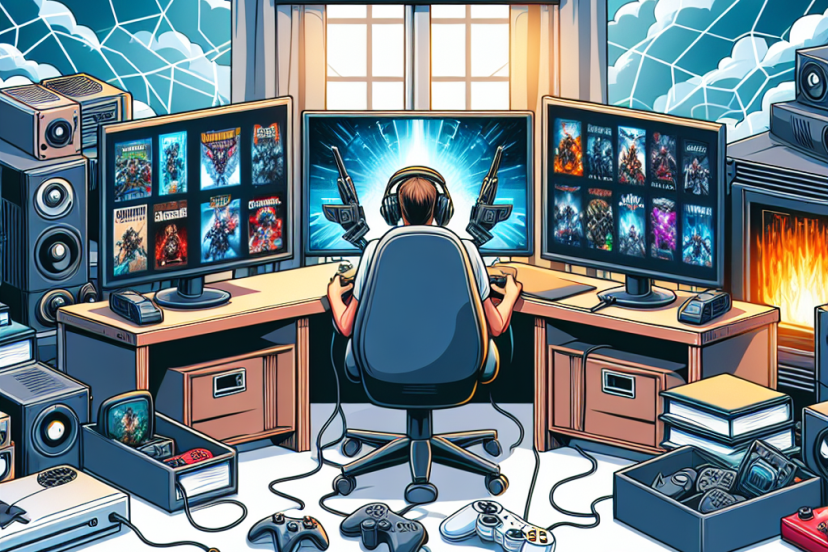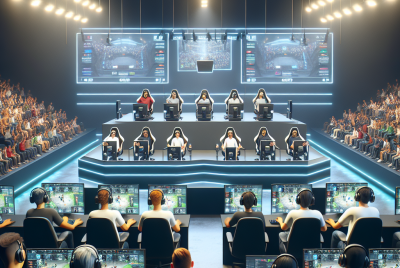Improve Your Setup with Quality HDMI Cables
Understanding HDMI Cables
HDMI (High-Definition Multimedia Interface) cables are integral to connecting a multitude of devices, including televisions, gaming consoles, projectors, and computers. The importance of selecting the right HDMI cable cannot be overstated, as a quality cable ensures that you enjoy the best audio and video experience.
Importance of HDMI Cables
HDMI cables transmit both high-definition video and audio, eliminating the necessity for separate audio cables. They support various formats, including 4K, 8K, and even 3D video. Quality HDMI cables can significantly improve the reliability and performance of your home entertainment system.
Types of HDMI Cables
Knowing the different types of HDMI cables is crucial in choosing the appropriate one for your setup:
- Standard HDMI Cable: Good for standard resolutions; typically used for older devices.
- High-Speed HDMI Cable: Supports 1080p and higher resolutions.
- Premium High-Speed HDMI Cable: Designed for 4K video; offers increased bandwidth and enhanced color depth.
- Ultra High-Speed HDMI Cable: Suitable for 8K resolutions and beyond; supports the latest HDMI 2.1 standards.
- Active HDMI Cables: Incorporate a chip to boost signal over longer distances, ideal for professional setups where cable runs exceed the standard lengths.
Compatibility
While HDMI is a universal standard, not all HDMI cables are created equal. Considering that HDMI technology continues to evolve, ensuring that your cable supports the latest specifications can make a substantial difference. Always verify compatibility with your devices, especially when mixing and matching older equipment with newer technology.
Cable Length**
The length of your HDMI cable directly impacts the signal quality. For lengths up to 25 feet, a standard HDMI cable will suffice under most circumstances. Beyond that, it’s advisable to use active HDMI cables or optical HDMI cables to prevent signal degradation. Consider your space and the distance between devices carefully before making a purchase.
Signal Quality
High-quality HDMI cables utilize more advanced materials and construction techniques, significantly improving signal quality. Look for cables constructed with oxygen-free copper and gold-plated connectors, as these materials resist corrosion and ensure a better connection. Avoid using highly affordable cables that may sacrifice quality for cost.
HDMI Cable Features
When investing in HDMI cables, look for specific features that enhance functionality:
- Ethernet Channel: Some HDMI cables provide an Ethernet channel, allowing multiple HDMI-enabled devices to share an Internet connection without additional cabling.
- Audio Return Channel (ARC): This feature enables audio from your television to be sent back to a compatible audio system through the same HDMI cable, simplifying your setup.
- Compatibility with HDCP: High-bandwidth Digital Content Protection (HDCP) is a key feature to consider, especially if you plan on streaming content that requires encryption.
Ensuring High Performance
To ensure that you’re maximizing your home theater setup, consider some best practices:
- Proper Routing: Avoid running cables along power sources, which can introduce interference. Use cable ties or anchors to keep HDMI cables neat and organized.
- Regular Checks: Periodically inspect the cables for any signs of wear or damage. A frayed or bent cable can lead to poor connectivity and degraded signal quality.
- Use Quality Extenders/Adapters: If you need to convert signals or extend reach, always opt for reputable adapters or extenders to ensure seamless transmission.
Brand Recommendations
Not all HDMI cables are made equal, and selecting high-quality brands can save you frustration:
- AmazonBasics: Known for reliable yet inexpensive options.
- Cable Matters: Known for high-speed performance and durability.
- Belkin: Offers premium options, especially for high-resolution formats.
- Zeskit: Ideal for HDMI 2.1 specifications, supporting high-refresh-rate gaming setups.
Troubleshooting HDMI Issues
Experiencing picture or sound issues? Here are common troubleshooting tips:
- Check Connections: Ensure all cables are properly connected. Loose or poorly connected HDMI cables can lead to issues like flickering screens or no audio.
- Device Compatibility: Make sure your devices are paired with compatible HDMI versions. Mismatched versions may limit performance.
- Reset Devices: Sometimes, simply resetting your devices (TV, console, etc.) may resolve connection issues.
Future-Proofing Your Setup
Investing in quality HDMI cables can be a way to future-proof your technology needs. As resolutions and refresh rates continue to climb, having cables that can handle higher bandwidth will protect your investment in more advanced devices.
Conclusion
In the realm of home entertainment systems, every component plays a role in delivering an optimal user experience. Quality HDMI cables serve as the vital link between devices, facilitating the transfer of rich visual and sound data. Understanding the types of HDMI cables, compatibility, features, and brand recommendations can empower you to make informed purchasing decisions, potentially enhancing your multimedia experience for years to come.




